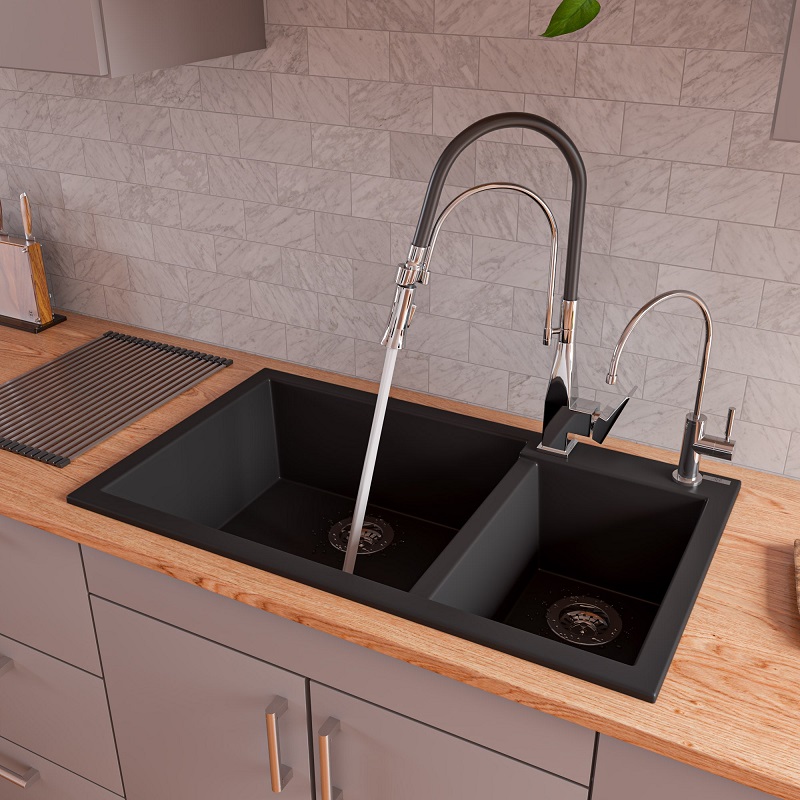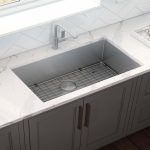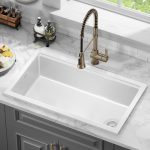Designing a kitchen with two sinks can transform the functionality and efficiency of one of the most frequently used spaces in your home. The addition of a second sink offers numerous benefits, particularly for those who cook frequently or host gatherings. This article explores the advantages of having two sinks, provides layout tips to optimize space, and addresses considerations for choosing the right setup for your needs.
Advantages of Having Two Sinks
Increased Efficiency in Meal Preparation
One of the primary advantages of installing two sinks in your kitchen is the significant boost in efficiency during meal preparation. With two sinks, you can streamline the process of washing and prepping ingredients. For instance, while one sink is occupied with washing vegetables, the other can be used for rinsing dishes or filling pots with water. This division of tasks allows for a more organized workflow, reducing the time spent juggling tasks and moving back and forth.
Additionally, having two sinks facilitates multitasking. If you have multiple people cooking or cleaning at the same time, each person can utilize a different sink. This setup is especially beneficial in larger households or when hosting events, as it helps avoid congestion and ensures that the kitchen remains a functional and productive space.
Enhanced Clean-Up and Dishwashing
The second sink is also invaluable for cleaning up after meals. With two sinks, you can designate one for washing dishes and the other for rinsing or soaking. This separation can prevent the buildup of food particles in the wash water, leading to more effective cleaning. Furthermore, having an additional sink makes it easier to manage large quantities of dishes, which is particularly useful during family gatherings or parties.
Another advantage is the ability to keep dirty dishes separate from clean ones. While one sink handles the initial rinse and soak, the other can be used for more thorough washing or drying. This separation minimizes cross-contamination and helps maintain a more organized and sanitary kitchen environment.
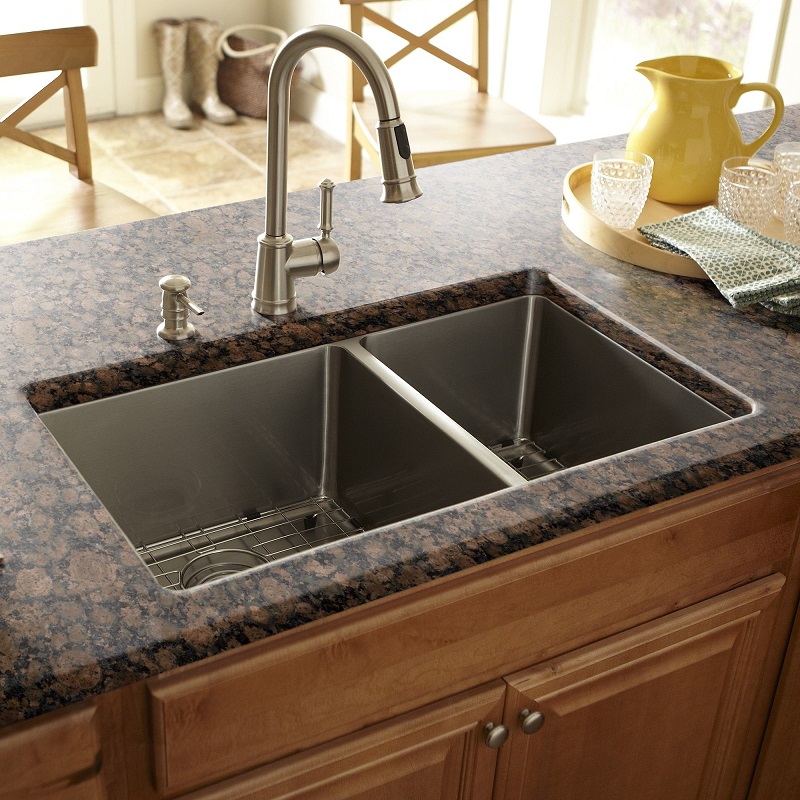
Flexibility in Kitchen Design and Functionality
Incorporating two sinks into your kitchen design offers increased flexibility. For example, you can install one sink at the traditional kitchen workspace and the other in an island or bar area. This setup allows for various tasks to be performed simultaneously, such as prepping ingredients at one sink while entertaining guests at the other.
Additionally, having two sinks enables creative use of space. You can place one sink in a convenient location for everyday tasks and the other in a secondary area for specific purposes, such as a butler’s pantry or a beverage station. This design approach enhances the functionality of your kitchen and can make it more adaptable to different needs and activities.
Choosing the Right Layout for Two Sinks
Side-by-Side Sink Configuration
The side-by-side sink configuration is a popular choice for kitchens with ample space. This layout places two sinks next to each other, allowing for easy access and coordination between them. This setup is ideal for tasks that require constant switching between sinks, such as washing and rinsing dishes or preparing ingredients.
When opting for a side-by-side configuration, ensure that there is enough counter space between the sinks for comfortable usage. The width of the counter should accommodate both sinks and provide sufficient room for food prep and other kitchen activities. Additionally, consider installing a high-arc faucet that can easily reach both sinks, maximizing convenience and functionality.
Sink in the Kitchen Island
Installing a sink in a kitchen island is another effective layout option, particularly in open-plan kitchens. This configuration allows you to integrate the sink into a central island, creating a functional workspace that is accessible from multiple angles. An island sink can be used for various tasks, such as washing vegetables, filling pots, or even cleaning hands while cooking.
When designing an island sink layout, ensure that the island is large enough to accommodate the sink and provide ample counter space around it. It’s also essential to plan for adequate plumbing and drainage, as adding a sink to an island requires careful consideration of these elements. Proper placement of the sink within the island can enhance workflow and improve the overall efficiency of your kitchen.
Dedicated Prep Sink and Utility Sink
Another effective layout involves combining a dedicated prep sink with a utility sink. The prep sink is typically smaller and placed near the main cooking area, while the utility sink is larger and positioned in a more convenient location for cleaning and washing tasks. This arrangement allows for specialized usage of each sink, making it easier to handle different kitchen tasks simultaneously.
For example, the prep sink can be used for washing fruits and vegetables, while the utility sink can handle larger pots, pans, and dishwashing. This separation not only improves functionality but also helps maintain a clean and organized kitchen environment. Ensure that both sinks are easily accessible and that their placement enhances the flow of activities in the kitchen.
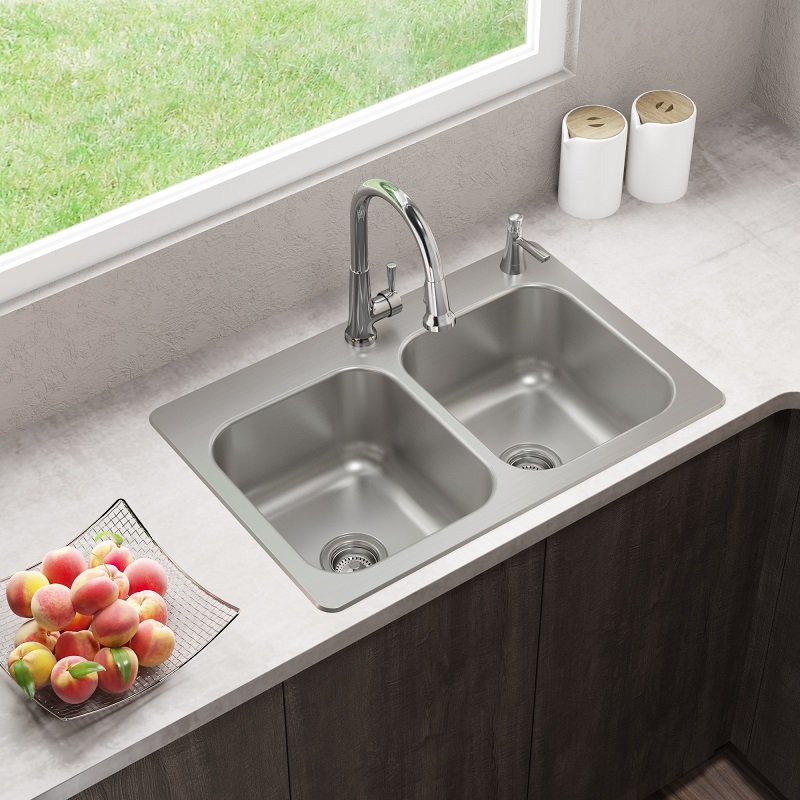
Practical Considerations for Installing Two Sinks
Plumbing and Installation Costs
When planning for two sinks in your kitchen, consider the additional plumbing and installation costs. Installing a second sink requires proper plumbing connections, including water supply and drainage. Depending on your kitchen’s layout and existing plumbing, this may involve significant modifications, which can increase the overall cost of the project.
To manage costs effectively, consult with a professional plumber who can assess your kitchen’s plumbing requirements and provide an accurate estimate. Additionally, factor in any potential costs for modifying cabinetry or countertops to accommodate the new sink. Proper planning and budgeting are essential to ensure a smooth installation process.
Space and Countertop Considerations
Having two sinks in your kitchen can impact the available counter space. Ensure that there is enough room between and around the sinks for effective use. Adequate counter space is crucial for food preparation, storage, and overall kitchen functionality.
When designing your kitchen layout, carefully measure and plan the placement of both sinks to ensure they fit well within the space and do not crowd the countertops. Consider using design software or consulting with a kitchen designer to create a layout that optimizes space and enhances the overall flow of your kitchen.
Aesthetic and Design Integration
Incorporating two sinks into your kitchen design should also consider aesthetic factors. Choose sink styles, materials, and finishes that complement the overall design of your kitchen. The sinks should blend seamlessly with your cabinetry, countertops, and other design elements.
Consider the design of your faucets and other fixtures to ensure they match the sinks and contribute to a cohesive look. Additionally, select sink materials that are durable and easy to maintain, such as stainless steel or composite materials. By integrating the sinks into the overall design of your kitchen, you can create a functional and visually appealing space.
Maintenance and Care for Dual Sinks
Cleaning and Maintenance Tips
Maintaining two sinks requires regular cleaning to ensure they remain in good condition. Clean both sinks daily to prevent the buildup of grime and food particles. Use non-abrasive cleaners and soft cloths to avoid scratching the sink surfaces.
For stainless steel sinks, use a mixture of mild soap and water to clean the surface, and rinse thoroughly to remove any residue. To prevent water spots, dry the sink with a clean towel. For composite or ceramic sinks, follow the manufacturer’s care instructions to maintain their appearance and prevent staining.
Addressing Common Issues
Dual sinks can sometimes present maintenance challenges, such as clogging or leaks. Regularly inspect the plumbing connections and drains for signs of wear or damage. Address any issues promptly to prevent further problems.
If you experience persistent clogs or leaks, consult with a professional plumber to resolve the issue. Regular maintenance and timely repairs are essential to keeping your dual sink setup functioning smoothly and ensuring the longevity of your kitchen fixtures.
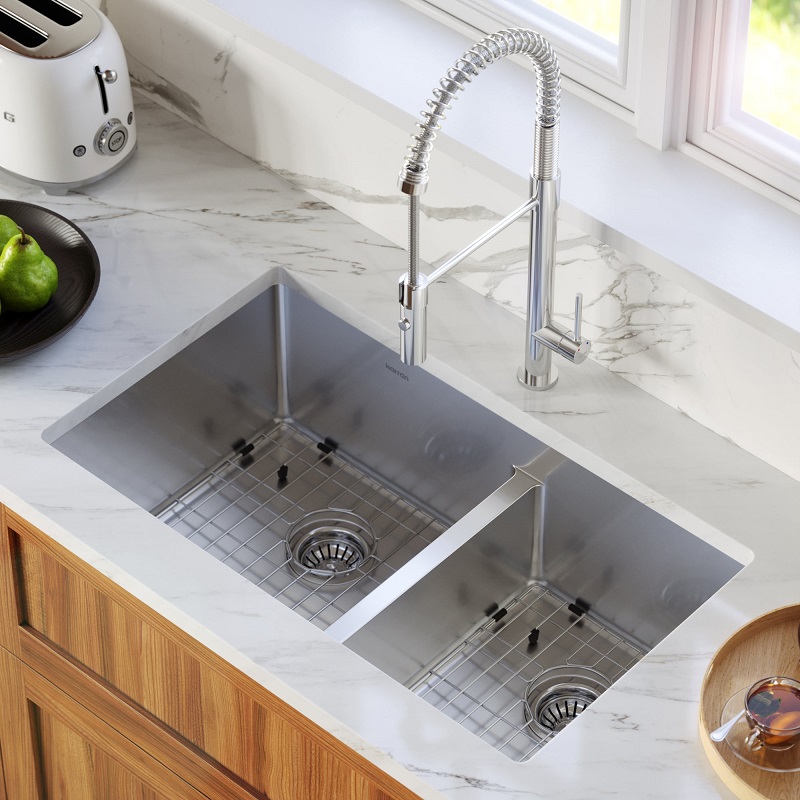
Conclusion
Summary of Benefits and Layout Tips
Designing a kitchen with two sinks offers numerous advantages, including increased efficiency, enhanced clean-up capabilities, and greater flexibility in layout. Whether you choose a side-by-side configuration, an island sink, or a combination of prep and utility sinks, careful planning and consideration of your kitchen’s layout and needs are essential.
By addressing practical considerations such as plumbing, space, and aesthetics, you can create a functional and visually appealing kitchen that meets your needs. Regular maintenance and proper care will ensure that your dual sink setup remains a valuable and efficient feature in your kitchen for years to come.
Final Thoughts
Incorporating two sinks into your kitchen design can significantly enhance its functionality and overall user experience. With the right layout and careful consideration of your needs and preferences, a dual sink setup can transform your kitchen into a more efficient and enjoyable space. Embrace the benefits of having two sinks and enjoy the improved convenience and versatility they bring to your daily cooking and cleaning tasks.
